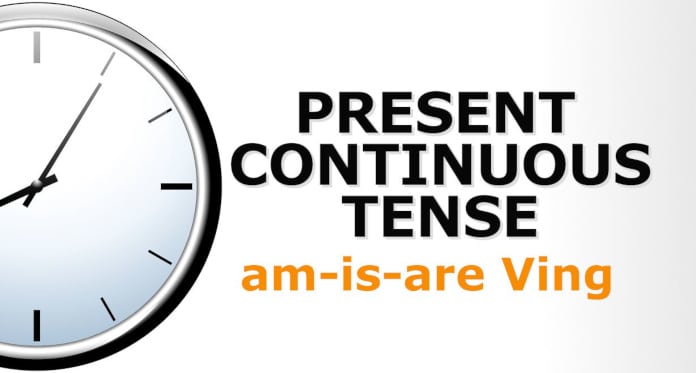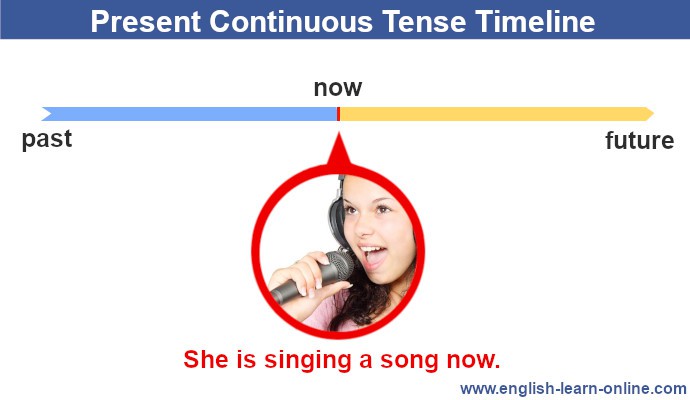

For affirmative sentences we use the formation of “am, is, are + Ving”. For negative sentences we use “not” after the auxiliaries “am, is, are”. To make questions just put “am, is, are” before the subject. See the animated sentences below to learn the structure of present continuous tense.
Is Why is Where is is cutting is eating eating is not eating eating eating
For the formation of positive sentences in present continuous tense we add use “am, is, are” and a verb with “-ing” suffix at the end.
For the formation of negative sentences in present continuous tense we use “not” together with “am, is, are“. The short forms are “‘m not, isn’t, aren’t ”
For the formation of question sentences (interrogative) in present continuous we take “am, is, are” before the subject of the sentence.
You can learn the explanations, usages and time adverbs of present continuous tense below.
Present continuous tense is used to describe activities that we do at the very moment of speaking.
Temporary but continuous actions can also be expressed using present continuous tense.
We can also use present continuous tense to talk about arrangements in near future
The word “always” can be used with the present continuous tense to give the idea of an annoying or bothering situation.
Some verbs have no progressive forms, so these verbs are used in simple present tense.
Some of these verbs are:believe, know, remember, understand, need, hate, like, love, prefer, want, feel, mean etc.
Examples:
Time expressions are now, just now, at the moment, at present
In this section you can learn present continuous tense with images and example sentences.
Below is a dialogue to learn present continuous tense. After reading the sentences, you can make similar dialogues.
Hi Susan! I am coming home. OK The dinner table is ready. Are you coming with your office friends?No, they are not coming. Mike is going to london and Sam is working at the office now. They are busy.
Why is Sam working at this time of the day? It is very late. He has a lot to do. OK. See you. Bye.You will see random examples of present progressive tense below. You can translate them into your native language.